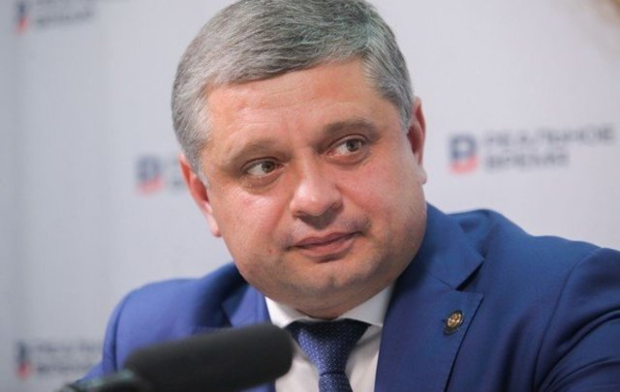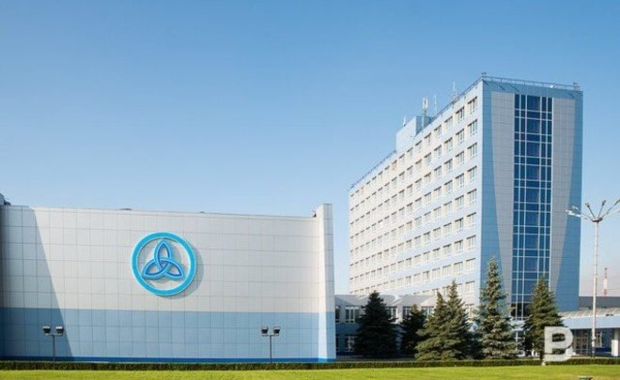Aleksandr Shadrikov: ‘Having reconstructed the BTF, Nizhnekamskneftekhim made a serious contribution to environmental protection’
Large-scale modernisation of biological treatment facilities at NKNK proves its effectiveness
Citizens of Nizhnekamsk have noted significant improvement in the quality of the air in the last three months — there aren’t pungent smells in the city any more. Republican ecologists and local authorities confirm this fact. Having invested 22 billion rubles in environmental protection measures since 2014, Nizhnekamskneftekhim has helped to stabilise the ecological situation in the petrochemical capital of Tatarstan and significantly raise the quality of life of the population. Read more in Realnoe Vremya’s report.
Milestone in environmental protection
An event that can easily be named as a turning point in Nizhnekamskneftekhim’s ecological history took place last year. The opening ceremony of upgraded biological treatment facilities of Nizhnekamskneftekhim (BTF) was at the end of the summer. It is hard to overestimate the significance of this environment protecting facility where all urban and industrial sewage goes. The result of the effective operation of BTF wasn’t slow. Complaints about the quality of the air stopped in the petrochemists’ capital. Minister of Ecology and Natural Resources of the Republic of Tatarstan Aleksandr Shadrikov said about it in Kazan at a meeting with journalists. By the way, ecologists had received hundreds of complaints about unpleasant smells before the big reconstruction of BTF.

“Having reconstructed the BTF, Nizhnekamskneftekhim made a serious contribution to environmental protection. We have a plan to improve Nizhnekamsk’s ecology. We’ve recently met with scientists of the Russian Academy of Sciences, they offered their solutions to the industrialists. There were established business ties with Nizhnekamskneftekhim. The enterprise clearly understands that it is necessary to solve problems,” the head of the Ministry of Ecology of the Republic of Tatarstan told Realnoe Vremya’s correspondent.
According to Shadrikov, after this meeting, there was made a decision to open a skills centre in Nizhnekamsk. Three institutes will chair it: the Zelinsky Institute for Organic Chemistry, Prokhorov General Physics Institute and Kazan Scientific Centre of the RAS. Having joined forces, the scientists and petrochemists will solve ecological problems in Nizhnekamsk together.”
Mayor of Nizhnekamsk Aydar Metshin proves the ecology minister’s words. At the final press conference, he told journalists that Nizhnekamsk didn’t have those smells it had had and also noted Nizhnekamskneftekhim’s merit not only in the opening of the upgraded BTF, construction of a new sewerage tank but also a water treatment station in 2007.
Company carries burden of water treatment alone
Historically, Nizhnekamskneftekhim has been responsible for the maintenance and the quality of treated sewage that is produced in the city and in enterprises, which are over 60, alone for over 50 years. Household sewage accounts for 19%, industrial sewage is equal to 81%.
A decision to unite communal and industrial sewage was made as early as the 60s when the construction of the young, promising city began together with the erection of the chemical factory. All industrial and social facilities of the city were built then by Nizhnekamskneftekhim. And it was profitable to combine the treatment of industrial and urban sewage both geographically and economically.
Nizhnekamskneftekhim’s BTF was designed by two biggest institutes in the Soviet Union — Giprokauchuk and Vodokanalproject of the USSR State Committee for Construction. For the facilities, designers chose a territory that was far from the city and much lower than the city and the industrial site, this is why sewage flows there on its own, which is very important. If the BTF had been located in another place, it would have been necessary to pump sewage out with the help of pumping stations, which would have increased the cost of treatment many times.
Not only the city’s borders but also industrial borders expanded year after year. The first large reconstruction of the BTF took place in the middle of the 80s. Its capacity rose from 56,000 to 213,000 cubic metres of sewage a day. Time for global changes came in the 21st century.
3 billion rubles for large reconstruction of BTF
The petrochemists began the first stage of reconstruction of the biological treatment facilities in 2015. The mechanical household sewage unit, the bar screen building with reception room, aerated sand traps, faucet of household and chemically contaminated sewage, the pump house for faucet discharge, electrical cable scaffolding were rebuilt and equipped with the latest equipped literally within two years. Yatagan special units designed to dispose of steam and gas mixtures were installed, which allowed collecting and disposing of smelly emissions.
All the facilities that were reconstructed at the first stage became hermetic. The second stage of reconstruction of the BTF began in 2018. It became possible to rebuild the building and facilities of the treatment unit — the reception room, a pool for polymer crumb collection with a gas outlet, sand traps, a unit for removing volatile hydrocarbons and gas treatment unit. The latest gas treatment facilities — biofilters — were installed too. Special microorganisms inhabiting block boxes work around the clock by neutralising unpleasant smells.
But this isn’t the end. Nowadays the construction of a new tank of industrial sewage about 15 kilometres long is about to come to an end. It will increase the traffic capacity of the new system transporting sewage to the treatment facilities, which will also reduce the environmental impact.
Nizhnekamskneftekhim invested over 3 billion rubles in the reconstruction of the BTF, including the construction of the tank.
Chemistry must be green
Tatarstan President Rustam Minnikhanov visited the solemn opening ceremony of the upgraded BTF in August 2019. Director General of TAIF GC Ruslan Shigabutdinov, Director General of Nizhnekamskneftekhim PJSC Azat Bikmurzin and head of Nizhnekamsk Municipal District, Mayor of Nizhnekamsk Aydar Metshin also were among honoured guests.
The head of the republic noted in his speech that Nizhnekamsk would manage to achieve the world’s ecological norms thanks to the latest technologies.
“I must note the work of TAIF Group of Companies and Nizhnekamskneftekhim joint-stock company that began the first stage of reconstruction of the treatment facilities several years ago,” Tatarstan President Rustam Minnikhanov noted in his speech. “We can say with confidence that despite the huge technologic load on the city, due to the latest technologies we will be able to achieve such an environmental situation that complies with all world standards.”
Ruslan Shigabutdinov, in turn, focused on the fact that compliance with ecological requirements and norms had always been one of the priorities in TAIF Group and NKNK PJSC’s work.
“There can’t be even doubt that costs on ecology are necessary. Compliance with all environmental standards is the key tasks of the factory, the shareholders. Today we are finishing the second stage of the reconstruction and moving towards the third stage. Any big industrial enterprise always has a lot of ecological issues. But I believe that with the support of the republic, the president and our active work, we will resolve all issues, and the environmental situation in the city and the region will be better than at any point of the globe. Chemistry must be green, such technologies exist,” Ruslan Shigabutdinov said.
It was said about the large reconstruction of the biological treatment facilities far beyond the republic. So in August 2019, together with Magadan Tatarstan chaired the rating of Russian regions with high sustainability. Petersburg Politics fund published the data. Experts calculated that the launch of the upgraded BTF by Nizhnekamskneftekhim PJSC influenced the high position of Tatarstan.
Special attention to air monitoring
The BTF were reconstructed within the fourth ecological programme of Nizhnekamskneftekhim. The enterprise has been working to protect the environment for many years. The petrochemists pay special attention to monitoring the air and sewage.
A mobile eco station was purchased in 2019 to control air pollution. The car that is equipped with the latest equipment is ready to take a full sample of the air in 20 key indicators. By its technical equipment, it is one of the few complexes in Tatarstan that has already established itself.
Now the petrochemists are working on new environment protecting sites. The latest development is a new automated air monitoring system. It forecasts emissions, literally from one to three days considering all emissions from the enterprise. The system includes available geographic information resources: wind direction, speed, humidity and others. One can forecast emissions on the basis of this information.
“Now we are doing tasks. This system will be put into operation in the environmental protection service in late December. Then there will be settings, adjustments of the equipment, our specialists will be trained. And we will launch this system. The programme will enable to model a situation linked with the development of our enterprise. So, by plotting new plants, new sources of emissions into the atmosphere on the map, we can forecast their environmental impact. The system is a computing programme, which is legitimate, confirmed by all state ministries. I think it is a very good tool for the future,” Andrey Rubezhov, the vice chief engineer on Environmental Protection at Nizhnekamskneftekhim, said in detail.

Twofold reduction
Here are the successes that Nizhnekamskneftekhim has achieved in the last five years in environmental protection:
- fresh river water consumption has reduced by 4 million 596K cubic metres (6,4%);
- energy consumption reduced by 12,87m kWh/y (because of the reconstruction of the cooling towers);
- feedstock consumption has gone down by 8,4%;
- emissions into the atmosphere have decreased by 17%.
Moreover, the volume of products made by the enterprise constantly grows. If we compare it with 2001: with an almost twofold rise in production output — from 1 million 429K tonnes in 2001 to 2 million 678K tonnes in 2018, emissions into the atmosphere have reduced by 27,370 tonnes, or 57%.